Posted by Elena del Valle on March 30, 2009

A CBP Border Patrol agent scans the area with binoculars
Photo: James Tourtellotte
Crouching in the bushes, silently hiding from men in uniforms with search lights a group of 20 people listen to a loud warning in Spanish with a thick American accent. Someone runs but he is caught, dropped to the ground and interrogated before being “deported.” The remaining “immigrants” wait a few minutes before crawling under the fence into the darkness and freedom.
Although it is meant to simulate hundreds or thousands of real scenes that take place across the 2,000 mile border that divides the two countries, the activity really takes place 500 miles south of the United States-Mexico border in the village of El Alberto. The people participating in the night time event are really curious travelers to Mexico wanting a glimpse of what undocumented immigrants from Mexico experience when attempting to cross north of the United States-Mexico border in search of a better life.
A group from the small Hnahnu Indian community of El Alberto in the Mezquital valley makes this activity available to tourists for a fee. The Hnahnu representatives that play smugglers, border patrol agents, deportees and other performers are volunteers. This part of Mexico is, according to a recent article in Guardian.co.uk, is known for its poverty, water contamination, and many immigrants to the United States. Increased border security and the worsening recession have made it increasingly difficult to find jobs for new arrivals to the United States so leaders of El Alberto have found a way to generate revenue and provide tourist entertainment.
The “show” is led by a representative of El Alberto in the role of a coyote or smuggler before the tourists head down to the river bank while border patrol car siren wails in the background. If the visitors are in good physical shape they may continue another six hours moving from one side of the river to the other constantly. Others may complete the experience in one hour. Apparently, even the simplest version includes a walk along a high wall (30 feet) without exit in sight.
Listen to Cesar Melgoza discuss
“Changing Latino Landscape” audio recording

Presenter Cesar Melgoza, managing director, Latin Force Group
Find out about
• How demographic, social, political and economic factors affect Latinos
• Number of Hispanics in U.S.
• Hispanics as a percent of the mainstream population
• Number of Puerto Ricans in Puerto Rico
• Hispanics, including Puerto Rico, as a percent of U.S. mainstream
• Number of Asians and African Americans
• Estimated size of Hispanic market by 2012
• Percentage growth of new Hispanics per year
• Number of counties where Latinos are majority
• Areas of significant Latino growth
• Area of U.S. with a 950 percent Latino growth
• Role of acculturation
• Hispanicity segmentation
Click here for information on the Changing Latino Landscape
Posted by Elena del Valle on March 27, 2009

Bacardi and the Long Fight for Cuba book cover
In Bacardi and the Long Fight for Cuba: The Biography of a Cause (Viking, $27.95) Tom Gjelten, a correspondent for international issues for National Public Radio (NPR), uses a literary magnifying glass to examine the history of five generations of the Bacardi family, world famous rum makers exiled from Cuba. The 413-page hardcover book, published in 2008, is divided into 23 chapters tracing 150 years of the family from the 1860s to the post-Castro era.
The idea for the book was born in 1999 as a way to tell the modern story of Cuba with a new twist, and Gjelten began writing it in 2003. He believes the Bacardis had the type of forward thinking community oriented mentality the island needed and failed to produce.
In the process of researching and writing the book he interviewed 100 people and conducted extensive archival research in Santiago and Havana, Cuba as well as Washington, D.C. and Miami, Florida. He traveled to Cuba 15 times and dedicated many weeks to the project in South Florida.
Gjelten believes the salient aspect of his findings is that although the Bacardi family business remains almost 100 percent family owned the company has survived through five generations of the family, and is thriving as a modern multinational company. The book has two sections of black and white photos of the Bacardi family, factories, buildings and people, including Fidel Castro and Che Guevara.
Gjeltenis, a resident of Arlington, Virginia, is a regular panelist on Washington Week, a PBS radio program. He received George Polk, Robert F. Kennedy and Overseas Press Club awards for his journalistic work from the former Yugoslavia. Prior to Bacardi and the Long Fight for Cuba, he wrote Sarajavo Daily: A City and its Newspaper Under Siege.

Bacardi and the Long Fight for Cuba book cover
Click here to buy Bacardi and the Long Fight for Cuba
Comments:
Filed Under: Books
Posted by Elena del Valle on March 25, 2009

Roselyn Sanchez at the Absolut Vodka Mango event
Photos: 217design.com, Liz Brown
Absolut Vodka is targeting fans of the potato based beverage and Latinos with a new mango flavored vodka, its tenth flavor. Made from all-natural ingredients without added sugar or added preservatives it is described in promotional materials as “Aromatic and juicy with a pronounced and genuine character of ripened mango, the taste is fruity and full-bodied.”
Puerto Rican actress Roselyn Sanchez was tapped as a celebrity host for the new flavor launch event in New York City earlier this month. She appeared on the opening day of the three day event and the third day of the event was dedicated to the Hispanic market. According to a company spokesperson, her status as a bilingual actress closely tied to her roots and who recently married a non Hispanic made her particularly attractive to the brand.
“Absolut Mango has done exceptionally well in both the South American market and at Global Travel Retail, and we are eager to replicate that success in the U.S. market, as we offer bartenders and consumers the true taste of mango in their cocktails,” said Ian Crystal, brand director of Absolut Vodka. “Absolut revolutionized the flavored vodka market in the mid-1980s and we continue to set the standard with exciting new flavors that have strong global appeal.”

Absolut Mango
With this product, Absolut is targeting young professionals 21 to 40 years old, especially Latinos. It recently launched a three week Hispanic oriented radio ad campaign in New York City, Los Angeles and Miami.
“Roselyn Sánchez is a successful actress from Puerto Rico passionate about her roots, but also very bi-cultural who is respected by both Hispanics and the general market. She was the perfect fit for the launch of our first tropical flavor because her personality and background embodied the exoticness of the mango,” said Sarah Bessette, public relations manager, Spirits, Pernod Ricard USA.
Sanchez plays Elena Delgado on Without A Trace, a television program. She has also appeared in several films. Prior to her career as an actress she studied marketing for three years at the University of Puerto Rico in the hopes of taking over the family business. She gave up her studies and joined a comedy show on the island. Eventually, she moved to New York City where she studied dancing, singing and acting and pursued a career in entertainment.
The design of the bottle for the new drink has more transparent glass than previous flavors and the decoration consists of mango fruit contours gathered in groups around the bottle. Shades of green, red and yellow combined were meant to reflect the characteristics of the fruit and stand out on back bars.
Pernod Ricard USA, the parent company of Absolut Vodka, is a spirits and wine company in the U.S., and the largest subsidiary of Paris, France-based Pernod Ricard SA. In July, 2008, Pernod Ricard completed the acquisition of Absolut Vodka brand from the V&S Group, and Pernod Ricard USA is now the second-leading company in the U.S. by sales.
Other Pernod Ricard USA brands include Glenlivet Single Malt Scotch Whisky, Chivas Regal Scotch Whisky, Jameson Irish Whiskey, Wild Turkey Bourbon, Seagram’s Extra Dry Gin, Beefeater Gin, Plymouth Gin, Martell Cognac, Perrier Jouët Champagne, and G.H. Mumm Champagne.
Target Latinos effectively by understanding how they shop
“Hispanic Holiday Shopping Patterns” audio recording

Manuel Delgado, CEO Agua Marketing, gives a presentation and participates in an extended Q&A discussion about
- Hispanic shopping patterns national survey
- Why Latino consumers may be more desirable than general market shoppers
- Hispanics holiday shopping patterns and behaviors
Click here for information on “Hispanic Holiday Shopping Patterns” audio recording
Posted by Elena del Valle on March 23, 2009

Latinos like to buy local produce
Photo: Simon and Baker
In the last few years organic foods and local products have become increasingly popular. Sales of organic foods are booming. They doubled, from $2.6 billion to about $5.2 billion, in the past four years. A quarter of those who prefer organic foods prefer to buy them from farmers’ markets and other local sources. Some people believe the recession may increase farmers’ markets sales because shoppers are interested in inexpensive alternatives to organic foods.
Although most Americans are mildly supportive of local shopping, Latinos strongly favor local purchases, especially of produce. In general, shoppers think the idea of purchasing goods and services from the mom and pop store near their home is quaint but when it comes to actually patronizing the store their enthusiasm wanes, according to Mintel. The market research company conducted a survey to identify shopper attitudes about buying local products and services and recently released a summary of the results.
“We found that although the ‘buy local’ mantra has gotten strong media coverage and government support, most Americans haven’t yet incorporated it into their lifestyles,” said Krista Faron, senior analyst at Mintel. “Nonetheless, local products offer unique benefits and are more accessible than ever before, so we think the local movement has relevance with today’s consumer.”
Only 17 percent of adults nationwide, according to Mintel’s consumer survey, buy local as often as possible. Those who do are willing to pay a premium and select local goods and services over non local ones even when the local items are less competitive in quality. Mintel researchers believe adults 25-34 year old and families with children as the most zealous local shoppers.
The researchers think parents believe that local food items are fresher and healthier than packaged products. At the same time, parents want to belong to strong communities that provide a good environment for their children, and feel that making local purchases helps to strengthen their community.
What people are most likely to buy near where they live is food. Fruits and vegetables are by far the most common items. Almost one third of the survey respondents (31 percent) said they purchase these items once a week or more often. Other common local purchases selected by 25 percent of shoppers are baked goods, meats or cheese/dairy products.
Local buying may be influenced by other factors. For example, almost one third (30 percent) of respondents to the Mintel survey thought the idea of buying local had appeal but didn’t know where to find what they sought; and 27 percent of shoppers who participated in the survey indicated they were indifferent about the source of their foods and services.
“Local is becoming a desirable product claim, as people try to save money, support their communities and preserve the environment. We found that over half of local shoppers are trying to help their local economy, but they also buy local products for convenience, better taste and the environment. Companies should use these motivations to craft marketing messages that appeal to locally conscious consumers,” said Faron.
Hispanics like local produce. Those that responded to the survey indicated they were likely to buy produce at least once a week. In August 2006, Mintel’s Hispanic Meals at Home U.S. Revealed that individuals who identify themselves as Hispanic were more likely than those who think of themselves as Americans to mostly cook from scratch.
Young Hispanics, in particular, prefer to buy local. Latinos and blacks aged 18-34 who participated in the Mintel research said they are more likely to purchase locally sourced meals in a restaurant or food service at a farmers’ market.
Target Latinos effectively by understanding how they shop
“Hispanic Holiday Shopping Patterns” audio recording

Manuel Delgado, CEO Agua Marketing, gives a presentation and participates in an extended Q&A discussion about
- Hispanic shopping patterns national survey
- Why Latino consumers may be more desirable than general market shoppers
- Hispanics holiday shopping patterns and behaviors
Click here for information on “Hispanic Holiday Shopping Patterns” audio recording
Posted by Elena del Valle on March 20, 2009
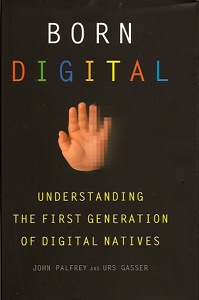
Born Digital Understanding the First Generation of Digital Natives book cover
John Palfrey and Urs Gasser, law professors and researchers, set out to outline the characteristics of the first group of people born and raised in a digital world, those born after 1980. In their recently published book, Born Digital Understanding the First Generation of Digital Natives (Basic Books, $25.95), they explore identity, privacy, safety, addition, violence, creativity, learning, and future prospects issues for this digitally oriented population.
The 375-page hardcover book begins with an introduction followed by 13 chapters: Identities, Dossiers, Privacy, Creators, Pirates, Quality, Overload, Aggressors, Innovators, Learners, Activists and Synthesis. Digital Natives, as the authors call them, live much of their lives connected. Unlike the rest of the population which distinguishes between their online and offline lives, these individuals born in the digital have one single identity with a presence or representation in varied locations.
Digital Natives have common attitudes and behaviors that sometimes contrast with those of Digital Immigrants, those individuals born before the online boom. Digital Natives rely on digital technologies and spend a great deal of time on them; they are likely to multitask; they relate to themselves, their friends and colleagues depending on their interaction with their technology; and they depend on technological tools to use, find and create information and art.
The authors clarify that only one billion of six billion people worldwide have access to digital technologies, and that this gap is widening and creating a divide between the haves and the have nots. At the same time, they point out that even the population that has access to technology may lack the skills necessary to take full advantage of it.
Palfrey, professor of law and vice dean at Harvard University, is also faculty director of the Berkman Center for Internet and Society at Harvard Law School. He chairs the Internet Safety Technical Task Force. Gasser, associate professor of law, St. Gallen, is also faculty director of the Research Center for Information Law and a faculty fellow at the Berkman Center for Internet and Society. He has written or edited six books and more thank 60 articles.
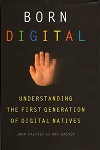
Click here to buy Born Digital: Understanding the First Generation of Digital Natives
Comments:
Filed Under: Books
Posted by Elena del Valle on March 18, 2009

TecnoPadres.com - click to enlarge
Photos: AOL Latino
AOL is now in the publishing business. Earlier this year, the company established MediaGlow, a publishing business unit and plans to launch 30 websites this year. Latinos in the United States (and Latin America) are part of AOL’s target audience. As part of its efforts to reach Spanish dominant Hispanic women through a series of websites, AOL Latino recently launched TecnoPadres.com, a new website offering new technology information for parents. Company executives expect about 60 percent of the website’s audience to be Hispanic.
The idea is for the Spanish language website to become a resource for parents to learn and understand technology, especially in relation to their children and their online safety. The website, sponsored exclusively by Verizon Wireless, is part of part of AOL Latino’s women’s lifestyle network Tu Vida y Más.

Miguel Ferrer, director, AOL Latino
“TecnoPadres.com will be a valuable resource for parents to learn how to keep their children safer online and to understand and relate to the technology that is increasingly shaping their children’s lives,” said Miguel Ferrer, director of AOL Latino. “TecnoPadres is an important new venture for AOL Latino, not only because the Latino parent market is largely untapped but also because it shows we continue to be forward thinking when it comes to showing leadership within the Latino category.”
The site features regular updates of content from several bloggers including translated content from The Online Mom, a content partner; as well as articles by TecnoDad, Carlos Cano, Laura Rendon, Sarah Klein, Barry Myers and TecnoBlogger. Topics planned include social networking sites like Bebo, Facebook, MySpace, Twitter, and mobile devices including cell phones and game units.
The Nuevo Esta Semana (New This Week) section will highlight staff picks of the newest and most relevant weekly features in websites, helpful tips and games. There are also plans in place for company produced videos visitors can watch, along with pre-roll commercials, on an embedded video player.
In the works is a video on how parents can set parental controls. Online safety for children is a topic AOL has addressed in the past in other forums. In September 2008, AOL launched SafetyClicks.com, offering online safety education. It recently introduced an updated version of its free, downloadable parental controls software for parents who want to supervise their children’s activities online.
AOL Latino, a bilingual portal for U.S. Hispanics, offers U.S. and Latin American news, financial tools, music and entertainment, personal finance, sports, fashion and beauty content as well as fee free email and instant messages. The website had 1.6 million unique visitors according to January 2009 comScore Media Metrix data, ranking it as one of the top three bilingual portals for Hispanics.
MediaGlow is designed to centralize AOL’s programming efforts, AOL.com and its content verticals, dozens of niche sites, and studios in Los Angeles and New York City. MediaGlow operates more than 70 sites and attracts more than 70 million unique visitors each month, according to comScore Media Metrix. MediaGlow, Platform-A for ad sales, and People Networks for social media efforts are AOL’s three strongest business divisions.
“Segmentation by Level of Acculturation” audio recording

Presenter Miguel Gomez Winebrenner
Discusses
- Assimilation versus acculturation
- Factors that affect Latino acculturation
- How to know if someone is acculturated
- Number of years necessary for acculturation
- Effects of immigration debate on acculturation
- Three main ways of segmenting Latinos
Click here for details about “Segmentation by Level of Acculturation”
Comments:
Filed Under: Media
Posted by Elena del Valle on March 16, 2009
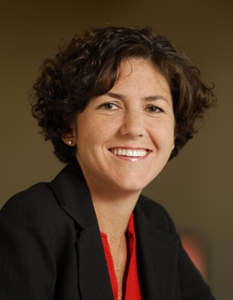
Kathleen Haley, director, Multicultural Marketing, Hewlett-Packard Company
Photo: Hewlett-Packard Company
A podcast interview with Kathleen Haley, director, Multicultural Marketing, Hewlett-Packard Company is available in the Podcast Section of Hispanic Marketing & Public Relations, HispanicMPR.com. During the podcast, Kathleen discusses effective marketing to Latinos and her company’s efforts to target United States Latinos with Elena del Valle, host of the HispanicMPR.com podcast.
Kathleen is responsible for increasing brand relevancy and consideration in the U.S. multicultural segments for her company. She leads a cross-company group of marketing professionals to increase the effectiveness of HP’s marketing to these consumer segments and drive sales.
Kathleen joined HP in March 2000 in Barcelona, Spain, as public relations manager for HP Designjet printers. During her four years in that city, she worked in a variety of internal and external communications jobs having global and European responsibilities. For four months in 2002, Kathleen managed the EMEA Communications Launch team in the Clean Room to launch HP after the merger with Compaq. In addition to leading a cross-company team, Kathleen led the merger communications for EMEA-based retailers and employees. Post merger, Kathleen joined the Imaging and Printing Group EMEA leadership team as employee communications manager and chief of staff.
Most recently, Kathleen became HP’s first Hispanic marketing manager, developing a strategy for HP’s entry into the market and leading initiatives in several key markets. Prior to joining HP, Kathleen worked in high tech public relations in agencies in Boston, Massachusetts, Grenoble, France and Barcelona, Spain. A resident of New York City, she holds an undergraduate degree in communications and Spanish and an MBA in international marketing from Boston College.
To listen to the interview, scroll down until you see “Podcast” on the right hand side, then select “HMPR Kathleen Haley” click on the play button below or download the MP3 file to your iPod or MP3 player to listen on the go, in your car or at home. To download it, click on the arrow of the recording you wish to copy and save it to disk. The podcast will remain listed in the March 2009 section of the podcast archive.
Reach Hispanics online today with
“Marketing to Hispanics Online” audio recording
Identifying and characterizing the booming Hispanic online market


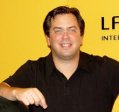
Joel Bary, Alex Carvallo and Matias Perel
Find out about
• The 16 million Latino online users
• Latino online users by gender
• What they do online
• Their language preferences
• How to reach Hispanic urban youth online
• What affects their online behavior
• What influences their purchases
Click here for information about “Marketing to Hispanics Online”
Posted by Elena del Valle on March 13, 2009
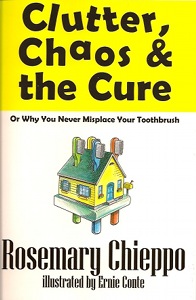
Clutter, Chaos and the Cure book cover
In her 98-page paperback book, Clutter, Chaos and the Cure or Why You Never Misplace Your Toothbrush (Kiwi Publishing, 9.95) Rosemary Chieppo, a professional organizer, explains why we have clutter in our lives and how to deal with it. The easy-to-read book is divided into 27 short sections addressing related topics.
She promises to help readers develop habits to find what they need when they need it; gain time to do other things (instead of searching for misplaced items); eliminate time wasters; control interruptions; develop a system to determine what to keep and what to discard; reduce clutter; and prevent a clutter relapse.
“Organizing just means having a place for everything and making sure everything is in its place,” said Chieppo, a member of the National Association of Professional Organizers. According to her, many people think of organizing in terms of physical space but they should remember that there is an emotional and mental side. “They don’t own their stuff. Their stuff owns them. Bringing themselves to donate or discard an item of sentimental value takes a certain amount of self-reflection.”
The book includes illustrations by Ernie Conte, a 30-year veteran illustrator and graphic designer. He was formerly staff artist and art director at Lender’s Bagels. Since 1999, Chieppo, of Born to Organize, has made a living helping people get organized.

Clutter, Chaos and the Cure
Click here to buy Clutter, Chaos & the Cure
Comments:
Filed Under: Books
Posted by Elena del Valle on March 12, 2009
Information provided by our Event Partner

6th Annual Multicultural Marketing Summit
Discover New Growth Opportunities within the Multicultural Markets
The 6th Annual Multicultural Marketing Summit will showcase solutions from Fortune 1000 companies that are successfully targeting multicultural audiences. The Summit is hosted by Geoscape and will take place October 28-30, 2009 at the Mandarin Oriental Hotel in Miami, Florida.
The Summit is a standout, five-star event, highly rated by participants for the quality of its agenda and speakers. The sophisticated ambiance of the Mandarin Oriental hotel creates an elegant atmosphere where senior executives can network and learn from peers about the latest in market intelligence, case studies and best practices across numerous industries. Firms will provide examples on how repositioning their companies within multicultural markets contributed significantly to increased revenue and profits. Presenters and attendees from past years include executives from leading companies such as MassMutual, Toyota Financial Services, Johnson & Johnson, Univision, H&R Block, Fox Home Entertainment and much more.
A favorite feature of the Summit is the live musical entertainment each night. Last year, attendees were treated to a special performance by The Island Def Jam Music Group’s break out artist, Karina Pasian.
Indulge in the five-diamond Mandarin Oriental hotel while networking with business executives from around the country. This truly remarkable event will provide you with unparalleled insight to help your company succeed within the multicultural markets.
Lodging:
Register before June 1st and stay at the Mandarin Oriental hotel for only $99/night. But hurry…rooms fill up quickly!
For More Information and to register:
Please visit www.multiculturalmarketingsummit.com or call 888-309-2005.
*Register today by calling 888-309-2005 and SAVE $50 on registration. Redemption Code: HispanicMPR2009*
Posted by Elena del Valle on March 11, 2009

A scene from Niña Moza
Photos: Spanish Broadcasting System
Beginning this week, Spanish Broadcasting System will air Niña Moza, a Brazilian soap opera type program about the abolition of slavery in that country, every Monday through Friday at 6 p.m. EST / 3 p.m. PST on Mega TV Channel 22 in Miami, Channel 57 in West Palm Beach, and Channel 405 in DirecTV Más in other U.S. cities.
Niña Moza is the story of a heroic woman who fought against the injustice of slavery, and her father, by expressing her ideals of freedom and equality. The story takes place two years before the renowned Golden Law period when the Republicans abolished slavery. Although the movement had been victorious in most cities, the town of Araruna where the main protagonist lives, remained one of the last bastions of slavery.
The story begins when Niña Moza (Debora Falabella), daughter of the Baron of Araruna (Osmar Prado), and Rodolfo (Danton Mello), son of the family’s lawyer, return from the provincial capital after completing their studies. The Baron of Araruna imposes his will on the entire population to prevent the spread of abolitionist ideas. When Niña Moza returns, she is full of anti-slavery notions of her own and becomes the political and ideological adversary of her own father.
She falls in love with Rodolfo after discovering that he is an abolitionist and activist like her. One night, he releases the slaves from their compounds and sends them to organizations that help them on their way to freedom. Soon, Niña Moza’s father discovers that Rodolfo is on the opposing side and the plot thickens.

Debora Falabella as Niña Moza
Falabella began her acting career when she was 12 years old with the support of her mother, a singer, and her father and actor and theater director. Prior to Niña Moza, she was in Francoise, Un Angel Cayo del Cielo, El Clon, and Paginas del Destino. Mello, born in 1975, was in Torre de Babel and Terra Nostra, two Brazial soap operas prior to his work in Niña Moza. Other actors in the program include Patricia Pillar, Eriberto Leao, and Vanessa Giacomo.
Spanish Broadcasting System, Inc. is one of the largest publicly traded Hispanic-controlled media and entertainment companies in the United States. SBS owns and operates radio stations in Hispanic markets such as New York, Los Angeles, Miami, Chicago, San Francisco and Puerto Rico. The Company also owns and operates Mega TV in Miami.
“Happy for No Reason” audio recording

Presenter Marci Shimoff, author, Happy for No Reason
What: An audio presentation by Marci Shimoff and Q&A with Marci Shimoff and HispanicMPR.com audio program host Elena del Valle about finding happiness.
Available exclusively on HispanicMPR.com!
Click here for more information on “Happy for No Reason” audio recording with Marci Shimoff
































